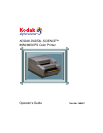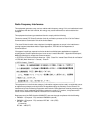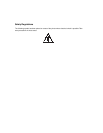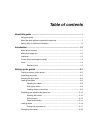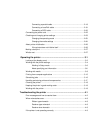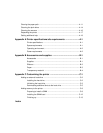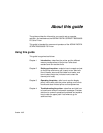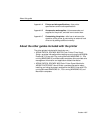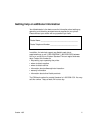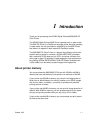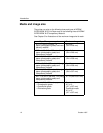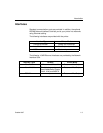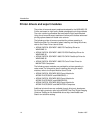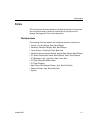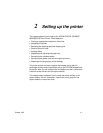
Radio Frequency Interference
This equipment generates, uses, and can radiate radio frequency energy. If it is not installed and used
in accordance with the User’s Guide, this energy may cause interference to radio and television
reception.
This equipment has been type tested and found to comply with the following:
This device meets FCC Class B emission limits for verification pursuant to Part 15 of the Federal
Communications Commission Rule of the United States.
“The class B limits for radio noise emissions from digital apparatus as set out in the interference–
causing equipment standard entitled “Digital Apparatus”, ICES-003 of the Department of
Communications.”
“Cet appareil numérique respecte les limites de bruits radioléctriques applicables aux appareils
numériques de Classe B prescrites dans la norme sur le matriél brouilleur : “Appareils Numériques”,
NMB-003 édicté par le minstre des Communications.”
•
47CFR Part 15 SubPart B (North American - USA) - Class B or “meets Class B limits for verification”
•
ICES-003 (North American - Canada) - Class B
•
VCCI-2 (Japan) - Class B
This equipment is in the 2nd class category (information equipment to be used in a residential area or
an adjacent area thereto) and conforms to the standards set by the Voluntary Control Council For
Interference by Data Processing Equipment and Electronic Office Machines aimed at preventing radio
interference in such residential areas. When used near a radio or TV receiver, it may become the
cause of radio interference. Read the instructions for correct handling.
Requirements of the EMC directive 89/336/EEC were met through compliance with the following:
•
EN50081-1 (European - EU) consists of:EN55022 (class B)
•
EN50082-1 (European - EU) consists of:IEC 801 - 2/91 (ESD)
IEC 801 - 3/84
(rf immunity)
IEC 801 - 4/88 (EFT)



